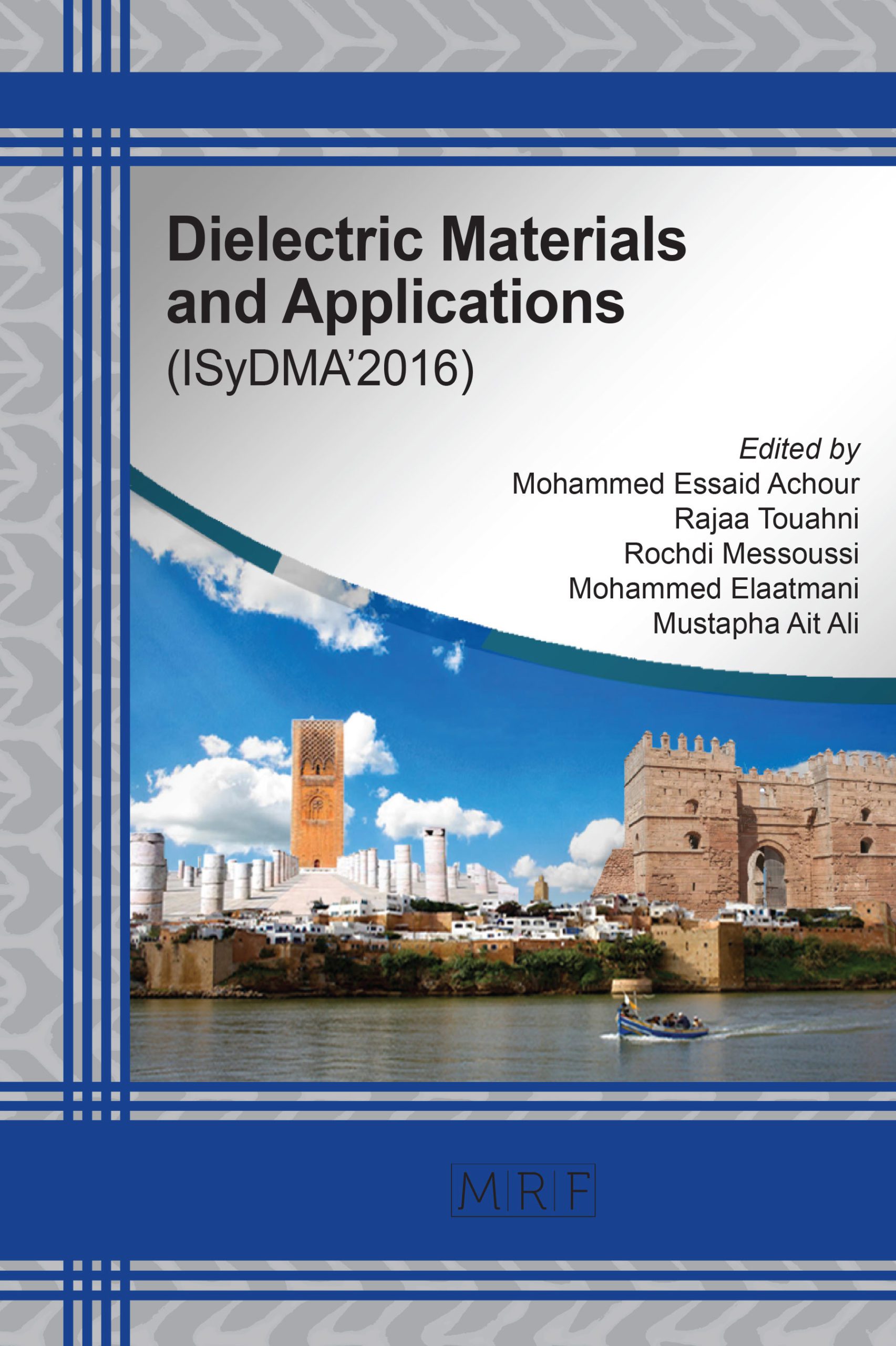M. ADAR, N. AlARMOZI, M. MABROUKI, A. OUERIAGLI, A. OUTZOURHIT, R.M. LEBLANC
Abstract. In the recent years, organic semiconductors are widely studied because they show a variety of electro-optical and electrical proprieties. Also it’s easy and facile to fabricate and process such kind of materials. Which make them promising as photovoltaic and optoelectronic devices [1-3]. In this study, we characterize and investigate electrical proprieties of ITO/PPEEB/Al structure. This structure is prepared by spin-coating. First PPEEB polymer is dissolved in chloroform solvent then coated on the substrate. Coated films on glass are used for optical characterization like transmission spectra in order to extract gap energy value. The transition is observed around 420 nm which correspond to electron transition between the valence band and conduction band equal to the gap energy of polymer Eg equal to 4eV. Second ITO substrate is used for electrical characterization, the Al electrode is deposited by thermal evaporation in vacuum on the top of structure.
Keywords
PPEEB, Schottky Diode, Polymer, I-V Charachteristic
Published online 12/10/2016, 3 pages
Copyright © 2016 by the author(s)
Published under license by Materials Research Forum LLC., Millersville PA, USA
Citation: M. ADAR, N. AlARMOZI, M. MABROUKI, A. OUERIAGLI, A. OUTZOURHIT, R.M. LEBLANC, ‘Electrical proprieties of self-assembled polymers prepared by spin coating route’, Materials Research Proceedings, Vol. 1, pp 303-305, 2016
DOI: http://dx.doi.org/10.21741/9781945291197-75
The article was published as article 75 of the book Dielectric Materials and Applications
References
[1] C. K. Chiang, C. R. Fincher, Y. W. Park, A. J. Heeger, H. Shirakawa, E. J. Louis, S. G. Gau and A. G. MacDiarmid, “Electrical Conductivity in Doped Polyacetylene”, Physical Review Letters, vol. 39, pp. 1098 (1977). http://dx.doi.org/10.1103/PhysRevLett.39.1098
[2] G.B. Appetecchi, F. Alessandrini, S. Passerini, G. Caporiccio, B. Boutevin, F. Guida-Pietrasanta, Electrochem. Acta 50 (22) (2005) 4396–4404. http://dx.doi.org/10.1016/j.electacta.2005.02.003
[3] E.W. Paul, A.J. Ricco, M.S. Wrighton, J. Phys. Chem. 89 (1985) 1441. http://dx.doi.org/10.1021/j100254a028
[4] G.D. Sharma, S.K. Sharma, M.S. Roy, Thin Solid Films 468 (1–2) (2004) 208–215. http://dx.doi.org/10.1016/j.tsf.2004.04.059
[5] P. Camarulu, A. Cirpan, L. Toppare, J. Electroan. Chem. 572 (2004) 61–65. http://dx.doi.org/10.1016/j.jelechem.2004.06.002
[6] A.G. Mac Diarmid, S.L. Mu, N.L.D. Somasiri, W. Wu, Mol. Cryst. Liq. Cryst. 121 (1985) 187. http://dx.doi.org/10.1080/00268948508074859
[7] A. Kitani, J. Yano, K. Sasaki, J. Electroanal. Chem. 209 (1986) 227. http://dx.doi.org/10.1016/0022-0728(86)80200-5
[8] : “Organic and Printed Electronics”, third edition of the OE-A brochure (2009)































